Flax flowers possess a profound symbolism that weaves through the realms of literature and art, igniting our imagination and touching our soul. This delicate yet resilient flower holds multiple layers of meaning, ranging from hope and purity to fertility and healing. Its significance is not confined to a single culture; instead, it blooms across ancient Egypt, Celtic culture, and Native American traditions, reflecting diverse beliefs and values.
In literature, flax serves as a potent symbol, breathing life into stories and poems. Writers draw inspiration from its graceful presence, metaphorically connecting it to human experiences of strength, resilience, and the fleeting nature of life. Painters, too, harness the vivid blue hues and delicate petals of flax flowers, capturing their beauty on canvas and infusing their artwork with profound emotion.
Key Takeaways:
- Flax flowers hold deep symbolism in various cultures across the world.
- They represent hope, purity, fertility, healing, and protection.
- Flax symbolizes strength, resilience, and the ephemeral nature of life.
- It is reflected in art through captivating paintings and in literature through evocative metaphors.
- Understanding flax symbolism enhances our appreciation for its portrayal in different artistic expressions.
Flax Flower’s Historical Significance
The flax flower has a rich historical significance, with a long-standing tradition of symbolism in various cultures throughout history. It has represented numerous meanings, including purity, rebirth, and prosperity, making it a significant emblem in ancient societies.
One of the key historical aspects of the flax flower is its association with linen cloth. In ancient times, linen was highly valued and considered a symbol of purity and domestication. The flax plant, from which the flower blooms, played a pivotal role in the creation of linen, further enhancing its symbolic importance.
The historical significance of the flax flower lies in its connection to the production of linen, a textile that held immense cultural and religious significance in ancient civilizations.
Within various ancient cultures, the flax flower held sacred symbolism in cultural and religious practices. It was revered for its association with purity and utilized in sacred rituals and ceremonies. The historical significance of the flax flower offers valuable insights into the beliefs and customs of these ancient civilizations.
In summary, the historical significance of the flax flower is rooted in its symbolic representation of purity and the crucial role it played in the creation of linen cloth. Its association with cultural and religious practices underscores the importance and reverence bestowed upon this beautiful bloom throughout ancient history.
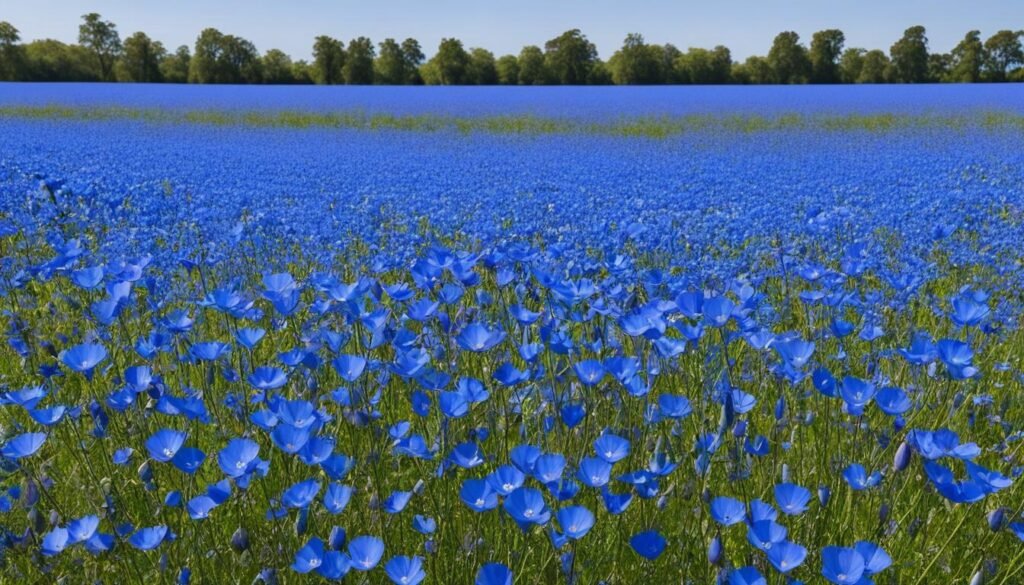
Key Points:
- The flax flower has a rich historical significance.
- It represents various meanings, including purity, rebirth, and prosperity.
- The creation of linen cloth from the flax plant adds to its historical importance.
- The flax flower played a pivotal role in cultural and religious practices.
Flax Flower Symbolism in Different Cultures
Flax flower symbolism varies across different cultures, exhibiting unique meanings and interpretations. Let’s explore the symbolism of flax flowers in ancient Egypt, Celtic culture, and Native American culture, shedding light on the beliefs and values of these civilizations.
Ancient Egypt: Symbol of Rebirth
Ancient Egyptians associated flax flowers with rebirth and used them in religious rituals. The vibrant blue blooms represented the cyclical nature of life, symbolizing the transition from death to new beginnings. Flax flowers held profound significance in funerary practices, emphasizing the belief in an afterlife and the eternal soul.
Celtic Culture: Emblem of Purity and Abundance
For the Celts, the flax flower held a deep symbolic meaning of purity and abundance. The blue blossoms were a testament to the Celtic people’s love and respect for nature, encapsulating their connection to the natural world. This symbolism reflected their beliefs in fertility, vitality, and the bountiful gifts that nature provides.
Native American Culture: Significance of Spirituality and Resilience
In Native American culture, flax flowers were revered for their spiritual significance. The vibrant blooms symbolized growth, resilience, and the interconnectedness between humans and nature. Native Americans believed that flax flowers brought harmony and balance to their communities, reflecting their deep respect for the natural world and their ability to adapt and thrive in challenging environments.
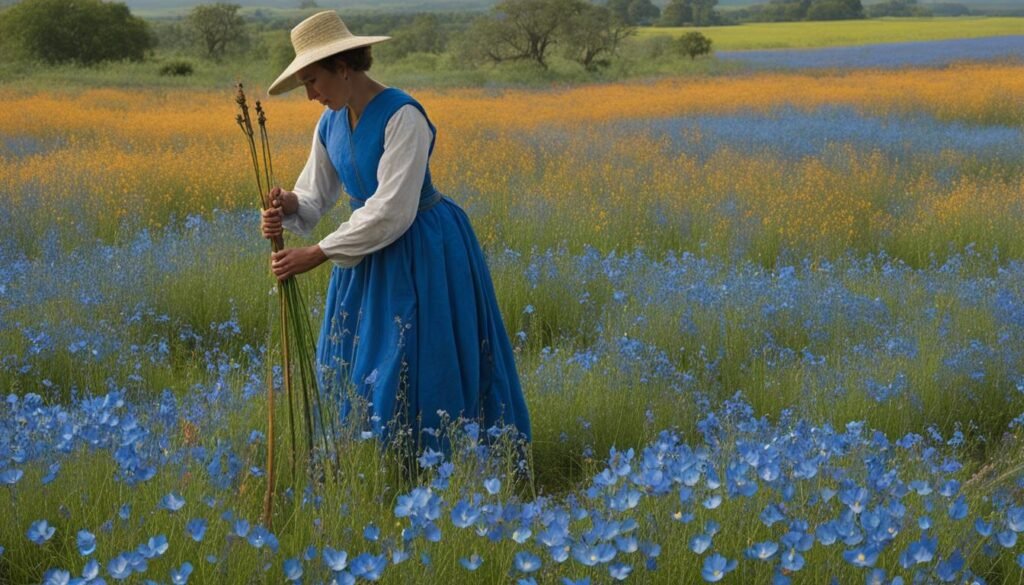
Artists skillfully incorporate flax flowers into their compositions, using them to evoke emotions and convey deeper meanings. The symbolism of flax flowers in art enhances the emotional impact and enriches the viewer’s experience by offering a profound and contemplative interpretation of the subject matter.
Just as artists employ flax flowers as a visual representation of grace and beauty, poets utilize them as metaphors for resilience, endurance, and the transient nature of life. In poetry, flax flowers symbolize the fragile yet enduring aspects of the human experience, reminding us of our ability to navigate through challenging times.
Through delicate brushstrokes and carefully crafted verses, flax flowers stand as a reflection of the delicate balance between strength and vulnerability. Artists and poets alike have harnessed the symbolism of flax flowers, using them as a powerful tool to convey profound emotions and transcendental ideas.
The symbolism of flax flowers in art enhances the emotional impact and deeper meaning of artistic expressions.
Flax Flowers in Paintings
In the realm of painting, flax flowers have served as a popular subject matter for artists seeking to capture their beauty and symbolism. These vibrant blooms are often portrayed with meticulous attention to detail, highlighting their graceful form and vibrant blue color.
| Painting | Artist | Year |
|---|---|---|
| Flax Flowers in a Vase | Vincent van Gogh | 1881 |
| Flax Field with Poppies | Émile Bernard | 1887 |
| Golden Flax | Frederick McCubbin | 1905 |
Flax Flowers in Poetry
Poets have long found inspiration in the symbolism of flax flowers, incorporating them into their verses to convey powerful emotions and explore profound themes. These delicate blossoms are often used as metaphors for resilience, endurance, and the transient nature of life.
- “In the fields of flax I find a reflection of my own strength, bending but never breaking.” – Emily Dickinson
- “The flax flower, with its delicate petals, reminds us of the ephemeral nature of existence.” – Robert Frost
- “As the flax flower dances in the breeze, so does the human spirit in times of adversity.” – Maya Angelou
The symbolism of flax flowers in both art and poetry aligns with the inherent fragility and resilience of the human condition. Through these creative mediums, flax flowers continue to inspire and evoke a range of emotions, reminding us to embrace the beauty and fleeting nature of life.
Flax Flower as a Personal Symbol
Flax flowers hold a deep personal symbolism, making them a powerful symbol for individuals seeking strength, resilience, and inner beauty. For some, the flax flower represents a sign of strength and resilience, embodying their ability to overcome challenges and thrive amidst adversity. The delicate nature of the flax flower also resonates with many, symbolizing beauty and elegance.
Whether worn as jewelry, displayed in artwork, or simply appreciated in nature, the flax flower serves as a reminder of the strength and beauty that lies within each individual. Its vibrant blue blooms evoke a sense of calm and tranquility, offering a symbol of hope and courage in times of difficulty.
Just as the flax plant endures harsh conditions to bloom into a stunning flower, individuals can draw inspiration from its symbolism to persevere and thrive in challenging circumstances. The flax flower encourages us to tap into our inner resilience and embrace our unique beauty, reminding us that we, too, have the power to bloom and flourish.
“Like the flax flower, we have the strength to weather life’s storms and emerge even more vibrant and beautiful.”
– Unknown
Flax Flower Symbolism for Individuals:
- Represents strength and resilience
- Serves as a symbol of inner beauty
- Encourages personal growth and perseverance
- Symbolizes the ability to overcome challenges
- Inspires hope and courage
Whether worn as a symbol of personal strength or admired for its delicate beauty, the flax flower resonates with individuals seeking to embody resilience, strength, and beauty in their lives. It serves as a constant reminder that even in the face of adversity, we have the power to bloom and flourish, just like the remarkable flax flower.
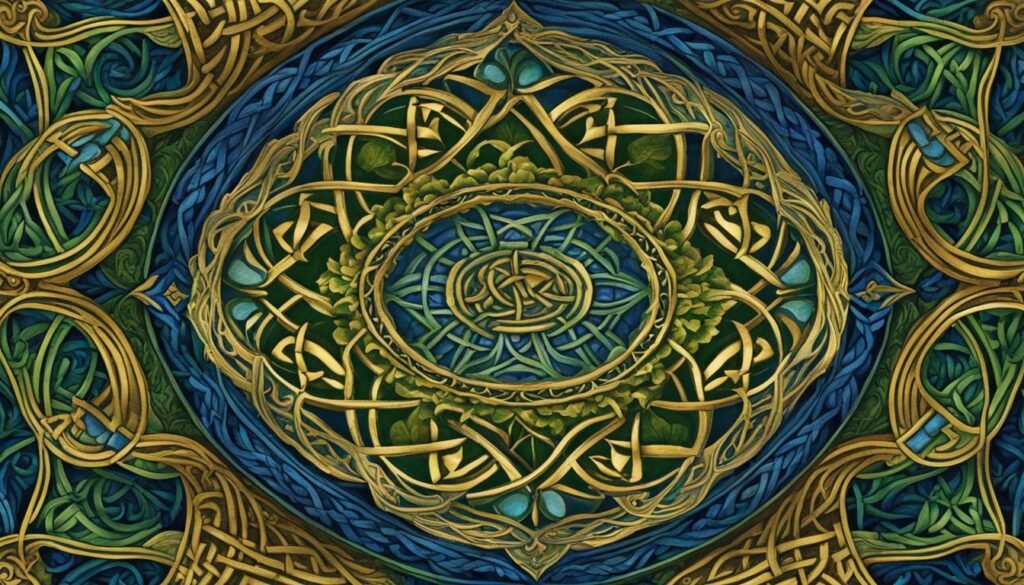
Summary:
-The flax flower symbolizes purity, integrity, and rebirth in Celtic culture.
-Associated with the goddess Bertha, the flax flower signifies the sacred essence of femininity and the cycle of life.
-The vibrant blue blossoms represent the Celtic people’s deep love and appreciation for nature.
-The practical benefits of the flax plant include the creation of linen cloth for its pure and durable qualities.
-The symbolism of the flax flower is reflected in various forms of Celtic artwork, showcasing its importance in Celtic culture.
Flax Flower Symbolism in Native American Culture
In Native American culture, flax flowers hold profound symbolism, representing spirituality, growth, and a deep connection to the earth. The vibrant blue blooms of the flax flower are regarded with great spiritual importance, believed to bring about harmony and balance within the community and the natural world.
The flax flower’s symbolism in Native American culture goes beyond its visual beauty. It serves as a powerful metaphor for resilience and adaptability, reflecting the strength of Native American communities in the face of adversity. Just like the flax flower, they have the ability to withstand challenges and adapt to change, remaining strong and rooted in their identity.
“The flax flower teaches us the profound lesson of resilience. Just as it springs forth from the earth and transforms into a vibrant, flourishing bloom, so too can we overcome hardships and emerge stronger than before.” – Native American Elder
This symbolism of resilience and adaptability can be seen in the traditions, stories, and rituals of Native American cultures. The flax flower represents their deep connection to the land, the cycles of nature, and the endurance of their traditions throughout history.
Flax Flower Symbolism in Native American Culture
| Symbolism | Meaning |
|---|---|
| Spirituality | The flax flower is believed to hold spiritual significance, symbolizing a connection to higher powers and the divine. |
| Growth | Flax flowers represent the growth and development of individuals and communities, embracing change and embracing new opportunities for learning and transformation. |
| Resilience | The flax flower’s ability to withstand challenging environments and thrive reflects the resilience and strength of Native American cultures in the face of obstacles. |
Through their symbolic association with spirituality and resilience, flax flowers play a vital role in the cultural fabric of Native American communities. They serve as a reminder of the deep-rooted values, traditions, and profound connection to the natural world that continue to shape their identity.
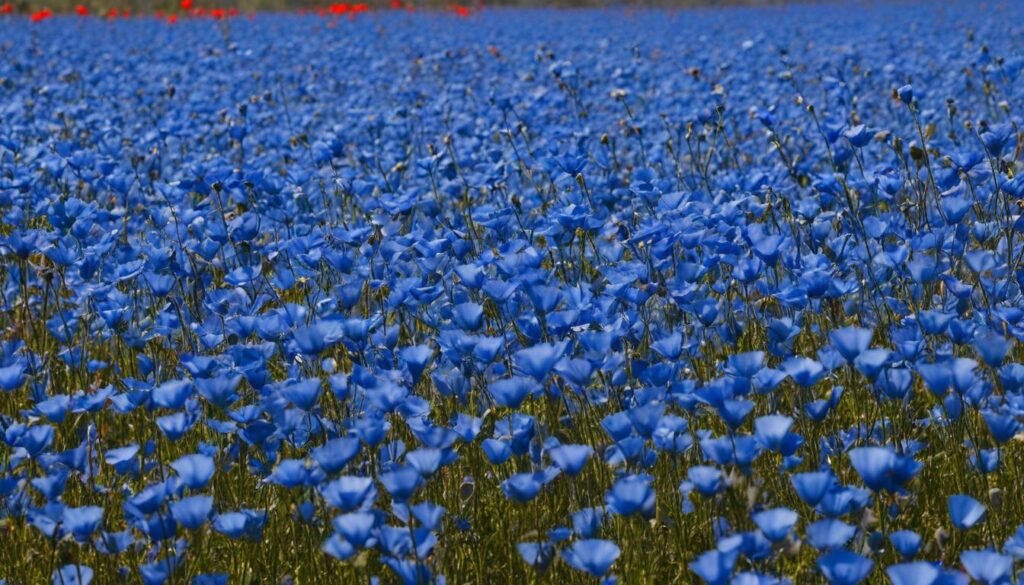
Flax flowers in paintings bring forth a sense of harmony, inviting viewers to find solace in their delicate presence. The symbolism infused within these artistic representations offers a unique perspective on the beauty and grace that can be found in the world around us.
Flax Flower Symbolism in Poetry
Flax flowers have long been embraced by poets as a powerful symbol, infusing their verses with layers of meaning and emotion. In the realm of poetry, flax flowers serve as metaphors for resilience, endurance, and the transient nature of life. They evoke a sense of strength and perseverance in the face of challenges, reminding us of the inherent beauty and strength within ourselves.
Through the delicate imagery of flax flowers, poets capture the fleeting nature of existence, emphasizing the fragility and impermanence of life’s moments. The vibrant blue blooms of flax flowers symbolize the fleeting beauty of youth and the ephemeral nature of time.
“Like the flax flower, we bloom and fade,
Resilient in our transient existence,
A testament to the beauty of impermanence.”
These lines from a poignant poem vividly illustrate how flax flowers serve as a vehicle for contemplating the brevity of life and the importance of embracing each passing moment.
Flax flower symbolism in poetry goes beyond its metaphorical representation. It adds depth and resonance to the written word, inviting readers to interpret and appreciate the complexities of human emotions and experiences. Through the imagery of flax flowers, poets give voice to the universal themes of resilience, vulnerability, and the ever-changing nature of existence.
Just as the petals of the flax flower gracefully dance in the wind, poets infuse their verses with the gentle sway of emotions, allowing readers to connect with their words on a profound level.
Symbolism of Flax Flowers in Poetry:
- Metaphor for resilience and endurance
- Representation of the transient nature of life
- Soothing reminder of the inherent strength within
- Evoke emotions and contemplation
- Vehicle for exploring the beauty of impermanence
Through the delicate and evocative symbolism of flax flowers, poetry becomes a vessel for introspection, inspiring readers to embrace their own resilience and find solace in the transient beauty of life.
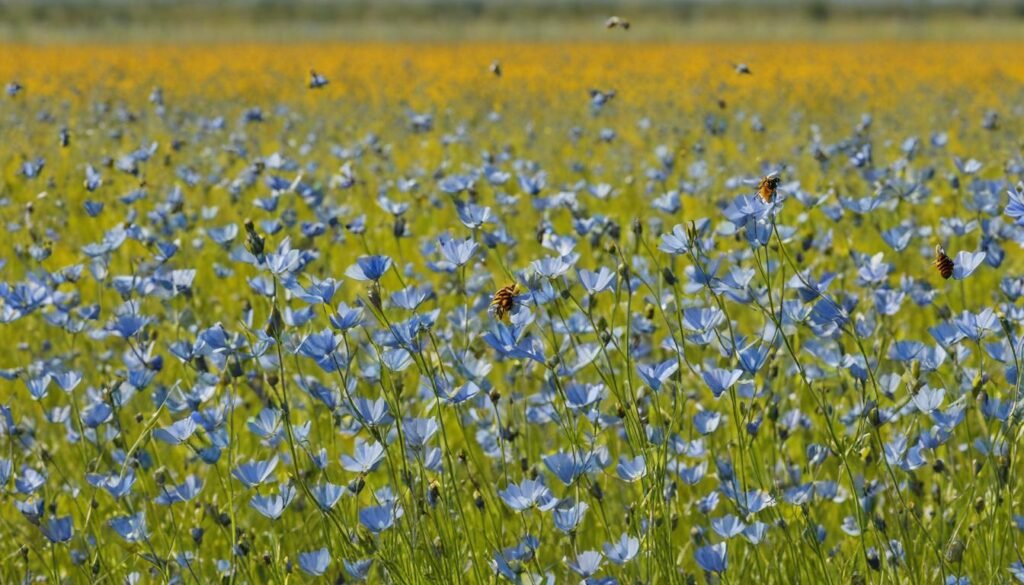
Flax Flower as a Personal Symbol
The flax flower holds deep meaning and symbolism for individuals, making it a powerful personal symbol. It represents various qualities, including strength, resilience, and inner beauty. For many, flax flowers serve as a reminder of their ability to overcome challenges and grow amidst adversity, embodying the spirit of strength and resilience.
Some individuals appreciate the delicate nature of flax flowers, finding beauty and elegance in their presence. The gracefulness of the flax flower resonates with them, symbolizing the beauty that can be found even in the most fragile and fleeting aspects of life.
Whether interpreting flax flowers as a symbol of strength or appreciating their delicate nature, they hold personal significance for those who embrace them as a personal symbol. The flax flower serves as a reminder of the unique qualities and characteristics that individuals possess, empowering them to face life’s ups and downs with grace and resilience.
Flax Flower Symbolism in Ancient Egypt
The flax flower held immense symbolism in the ancient civilization of Egypt, permeating their culture and religious practices. Considered a sacred plant, it represented various aspects of life and spirituality, offering insights into the beliefs and values of the Egyptian people.
The flax flower was primarily associated with fertility and rebirth, embodying the cycle of life. It symbolized the potential for new beginnings and was often depicted in religious artwork and rituals. The vibrant blue color of the flax flower represented the sky, linking it to the celestial realm and the gods.
One of the key Egyptian goddesses associated with the flax flower was Bertha, the goddess of fertility and childbirth. The flower represented her divine presence and blessings, offering protection and aid during childbirth.
The flax flower was also regarded as a symbol of purity and cleansing. It was commonly used in religious ceremonies and rituals to purify sacred spaces and individuals. The Egyptians believed that the flax flower possessed potent spiritual energy, capable of warding off evil spirits and negative energies.
Understanding the symbolism of the flax flower in ancient Egypt provides a fascinating glimpse into the religious practices and cultural significance attributed to this beautiful plant. It highlights the ancient Egyptians’ deep reverence for nature, fertility, and the cycle of life.
| Symbolism | Meaning |
|---|---|
| Fertility | Represented the cycle of life and potential for new beginnings |
| Rebirth | Symbolized the renewal of life and spiritual transformation |
| Purity | Used in religious rituals to cleanse and purify |
As we delve deeper into the symbolism of the flax flower, we uncover the intricate tapestry of ancient Egyptian culture and spirituality, where nature and the divine were intertwined.

The Goddess Bertha and the Flax Flower
The flax flower’s connection to the fertility goddess Bertha exemplified its significance in Celtic culture. Bertha was often depicted with flax flowers woven into her hair, symbolizing the abundance and prosperity associated with the flax plant. Her role as a guardian of fertility and domestic matters further solidified the flax flower’s symbolic ties to Celtic rituals and ceremonies.
The Symbolism of Purity and Rebirth
In Celtic culture, the flax flower’s blue blossoms hold a powerful representation of purity. The color blue, associated with water and the sky, signified the purity of the soul in Celtic belief systems. Thus, the flax flower’s blue hue became a visual metaphor for the purity and integrity prized by the Celts.
Additionally, the flax flower’s symbolism extended to the concept of rebirth. Just as the flax plant goes through stages of growth and renewal, the flax flower represented the cyclical nature of life and the potential for transformation and new beginnings.
The flax flower’s significance in Celtic culture is a testament to the deep reverence the Celts held for purity, integrity, and the cycles of life. Its vibrant blue blossoms symbolized their love for nature and served as a powerful reminder of the importance of resilience and renewal.
Conclusion
Flax flowers hold deep symbolism and meaning in various cultures across the world. Understanding their historical and cultural significance enhances our appreciation for their representation in art, literature, and personal contexts. The symbolism of flax flowers traverses different cultures and has inspired artists and writers throughout history. Whether depicted in paintings or used as metaphors in poetry, flax flowers capture the essence of grace, beauty, resilience, and the ephemeral nature of life. By exploring the various aspects of flax flower symbolism, we gain a deeper understanding of its rich tapestry in literature and art.
FAQ
What is the symbolism of flax in literature and art?
Flax holds deep symbolism in literature and art, representing qualities such as hope, purity, fertility, healing, and protection.
What is the significance of flax in different cultures?
Flax flowers have distinct symbolism in ancient Egypt, Celtic culture, and Native American culture, representing rebirth, purity, abundance, spirituality, growth, and resilience.
How does flax symbolize strength and resilience for individuals?
Flax flower serves as a personal symbol for individuals, representing strength, resilience, and inner beauty. It can be interpreted as a sign of overcoming challenges and growing amidst adversity.
What is the historical significance of flax flowers?
Flax flowers played a pivotal role in creating linen cloth, which was a symbol of purity and domestication in various civilizations throughout history.
How are flax flowers depicted in paintings?
Flax flowers are often depicted in paintings as a representation of grace and beauty, capturing their vibrant hues and delicate composition.
How are flax flowers used as metaphors in poetry?
Poets use flax flowers as metaphors for resilience, endurance, and the ephemeral nature of life, enriching their verses with deeper meanings and emotions.




